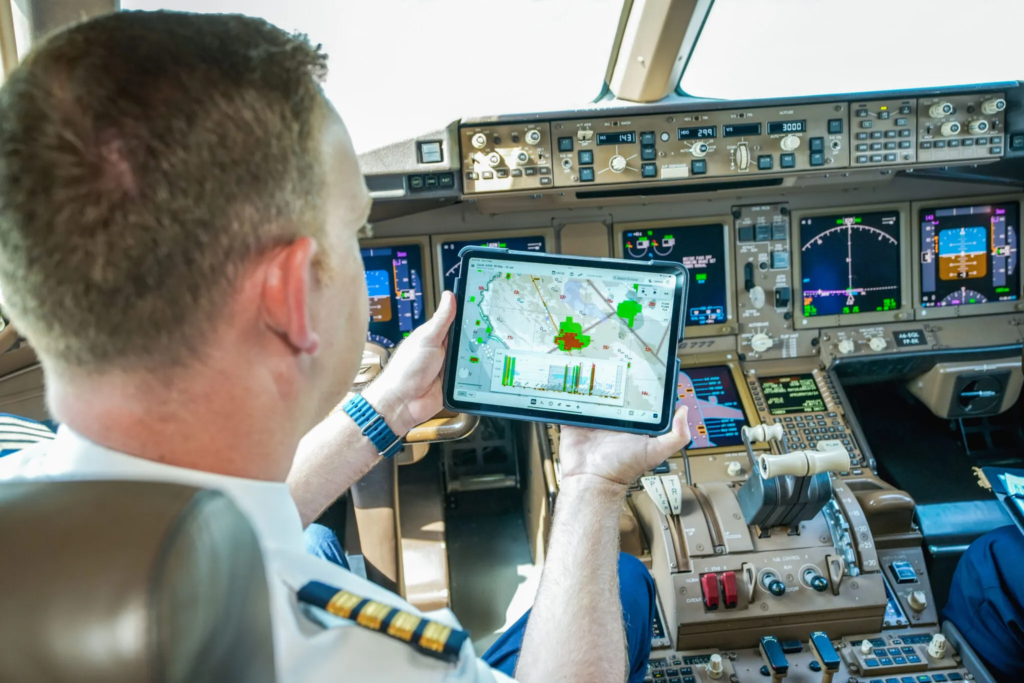You’re mid-flight, maybe watching a film or sipping a coffee, when that familiar seatbelt sign lights up. A few bumps later, your drink isn’t where you left it. Emirates wants to change that story.
The Dubai-based airline has introduced AI-powered tools and real-time data systems designed to reduce turbulence — or at least make it less of a surprise. The goal? Smoother skies, happier passengers, and a little more peace of mind at 35,000 feet.
Predicting turbulence before it happens

While turbulence will never disappear completely, Emirates’ new tech aims to predict and avoid it more effectively than ever. The airline has invested in a mix of AI, predictive analytics, and collaborative data-sharing platforms that help pilots spot and steer around unstable air.
Among the key systems are:
SkyPath – Using AI and machine-learning, SkyPath collects data from thousands of aircraft to detect turbulence zones, even the invisible “clear-air” kind that traditional radar can’t always identify.
Lido mPilot – This advanced flight-navigation app gives pilots live weather charts, cloud and wind updates, and real-time turbulence forecasts. It means Emirates crews know what’s ahead and can adjust routes to keep things smooth.
IATA Turbulence Aware – Emirates is part of this global data-sharing network, which gathers real-time turbulence reports from airlines around the world. Every flight adds to a constantly updated map of global conditions, helping pilots make better decisions.
How passengers benefit
For travellers flying from Dubai, this shift could make a noticeable difference. The airline reports a significant drop in unexpected severe turbulence across its network since rolling out the new systems.
That translates to smoother journeys, fewer sudden seatbelt alerts, and a more relaxed experience overall. Cabin crews can continue service with fewer interruptions, and passengers can enjoy a quieter, more stable flight.
It’s also a win for operational safety. By predicting and avoiding turbulence, Emirates can reduce wear on aircraft, improve fuel efficiency, and support the UAE’s broader push for sustainability in aviation.
Emirates is leading this change
As one of the world’s busiest long-haul carriers, Emirates faces unique challenges. Many of its flights pass through multiple climate zones, where turbulence is more likely to occur.
The airline’s proactive adoption of AI reflects its commitment to staying ahead of the curve — not just in comfort and service, but in safety and innovation.
Captain Hassan Alhammadi, Divisional Senior Vice President Flight Operations, summed it up well: while turbulence can’t be fully eliminated, Emirates is determined to minimise unexpected encounters through technology and data-driven insights.
Flying smarter, flying smoother
This isn’t just about comfort — it’s about creating a more connected, intelligent way to fly. By integrating predictive systems into its operations, Emirates is positioning itself as a leader in aviation innovation.
For passengers, that means a quieter seat, fewer bumps mid-meal, and more confidence when the seatbelt sign switches on. For the airline, it’s another step toward smarter, safer skies.
So the next time you’re flying out of Dubai and notice a calm, steady flight, there’s a good chance AI had something to do with it.
Read More:
- UAE delivery rider rules 2025: Dubai and Sharjah roll out stricter lane laws and fines – Social Kandura
- Dubai’s “20-Minute City” plan speeds up life, cuts costs – Social Kandura











